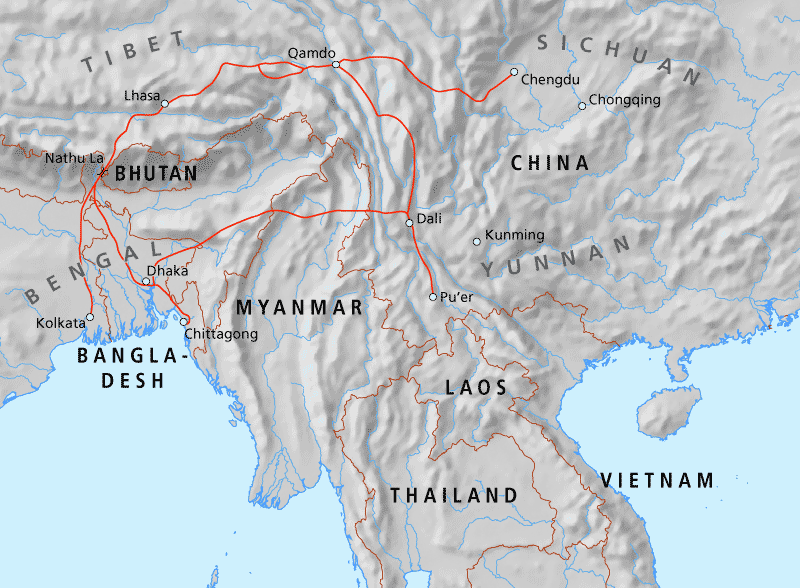|
Jianchuan
Jianchuan County () is a county in the Dali Bai Autonomous Prefecture located in the western part of Yunnan Province, China. The county is about southwest of Lijiang and north of Dali. The historical town of Shaxi in the southeast of the county lies on the old Tea Horse Road to Bengal. China National Highway 214, from Xining to Jinghong Jinghong (; khb, ᨩ᩠ᨿᨦᩁᩩ᩵ᨦ; th, เชียงรุ่ง, , ; lo, ຊຽງຮຸ່ງ; also formerly romanised as ''Chiang Hung'', ''Chengrung'', ''Cheng Hung'', Jeng Hung, ''Jinghung'', ''Keng Hung'', ''Kiang Hung'' and ' ... in southern Yunnan, passes through the northeast of the county. Administrative divisions Jianchuan County has 5 towns and 3 townships. ;5 towns ;3 townships * Yangcen () * Misha () * Xiangtu () Climate References External links Jianchuan County Official Website County-level divisions of Dali Bai Autonomous Prefecture {{Yunnan-geo-stub ... [...More Info...] [...Related Items...] OR: [Wikipedia] [Google] [Baidu] |
Dali Bai Autonomous Prefecture
Dali Bai Autonomous Prefecture (; Bai: ) is an autonomous prefecture of northwestern Yunnan Province, People's Republic of China. Dali has an area of and its seat is located in Xiaguan, Dali City. Subdivisions The prefecture is subdivided into 12 county-level divisions: one county-level city, eight counties A county is a geographic region of a country used for administrative or other purposesChambers Dictionary, L. Brookes (ed.), 2005, Chambers Harrap Publishers Ltd, Edinburgh in certain modern nations. The term is derived from the Old French ... and three autonomous counties: Demography ''Ethnic groups in Dali, 2000 census'' References External linksDali Prefecture Official Website Autonomous prefectures of the People's Republic of China Bai people {{Yunnan-geo-stub ... [...More Info...] [...Related Items...] OR: [Wikipedia] [Google] [Baidu] |
Tea Horse Road
The Tea Horse Road or ''chamadao'' (), now generally referred to as the Ancient Tea Horse Road or ''chamagudao'' () was a network of caravan paths winding through the mountains of Sichuan, Yunnan and Tibet in Southwest China. This was also a tea trade route. It is also sometimes referred to as the Southern Silk Road or Southwest Silk Road. There are numerous surviving archaeological and monumental elements, including trails, bridges, way stations, market towns, palaces, staging posts, shrines and temples along the route. "Ancient Tea Horse Road" is a historical concept with a specific meaning. It refers to a major traffic road formed by the exchange of tea horses between Han and Tibet from the Tang and Song Dynasties to the Republic of China. Road classificantion Shanxi-gansu Tea Horse Road(陕甘茶马古道) Shanxi-gansu Tea Horse Road(陕甘茶马古道),It is the main road for tea in mainland China to travel west and exchange for horses. It is one of the main routes of the ... [...More Info...] [...Related Items...] OR: [Wikipedia] [Google] [Baidu] |
Shaxi, Yunnan
Shaxi () is a historic market town in Jianchuan County, Dali Prefecture, Yunnan province, China. It is located roughly halfway between Dali and Lijiang. The Sideng market square of Shaxi was added to the World Monuments Watch List of 100 Most Endangered Sites in 2001. Shaxi started as a trading point for tea and horses during the Tang Dynasty (618 – 907). The prosperity of the town was at its height during the Ming and Qing dynasties (1368–1912). It is probably the most intact horse caravan town on the Ancient tea route leading from Yunnan into Burma and Tibet and is now being preserved through a cooperation between the Swiss Federal Institute of Technology Zürich (ETH) and the People's Government of Jianchuan County. Nearby Shibao mountain contains Buddhist rock carvings and temples of over 1300 years old with, amongst others, images of the bodhisattva Guanyin. The two main ethnic groups of Shaxi are the Bai and Yi people The Yi or Nuosu people,; zh, c=彝� ... [...More Info...] [...Related Items...] OR: [Wikipedia] [Google] [Baidu] |
Old Town Of Lijiang
Dayan (), commonly called the Old Town of Lijiang () is the historical center of Lijiang City, in Yunnan, China. It is a UNESCO World Heritage Site. History The town has a history going back more than 1,000 years and was once a confluence for trade along the "Old Tea Horse Caravan Trail". The Dayan Old town is famous for its orderly system of waterways and bridges, a system fast becoming but a memory as the underground water table drops, probably due to over-building in the suburban areas. Lijiang's culture combines traditional Nakhi culture and incongruous elements learned from Ming dynasty Han Chinese traders who settled in the region centuries ago. Nakhi people have kept alive a timber and mud brick housing style which they learned from Nanjing traders. Local carpenters still build elaborately constructed timber house frames from memory without blueprints or other diagrams. These houses are often enhanced by detailed flower and bird carvings on the windows. The carvings ar ... [...More Info...] [...Related Items...] OR: [Wikipedia] [Google] [Baidu] |
China National Highway 214
China National Highway 214 (G214) runs from Xining, Qinghai to Jinghong, Yunnan. It is 3,256 kilometres in length and runs south from Xining towards Tibet, and ends in Yunnan Province. Route and distance See also * China National Highways External linksOfficial website of Ministry of Transport of PRC 214 Year 214 ( CCXIV) was a common year starting on Saturday (link will display the full calendar) of the Julian calendar. At the time, it was known as the Year of the Consulship of Messalla and Suetrius (or, less frequently, year 967 ''Ab urbe con ... Transport in Qinghai Roads in Tibet Transport in Yunnan {{PRChina-road-stub ... [...More Info...] [...Related Items...] OR: [Wikipedia] [Google] [Baidu] |



